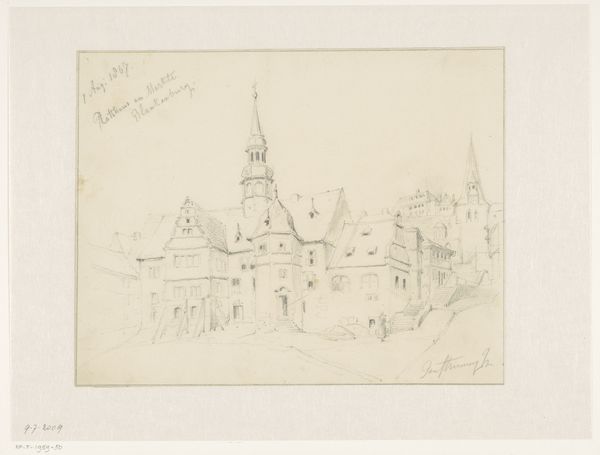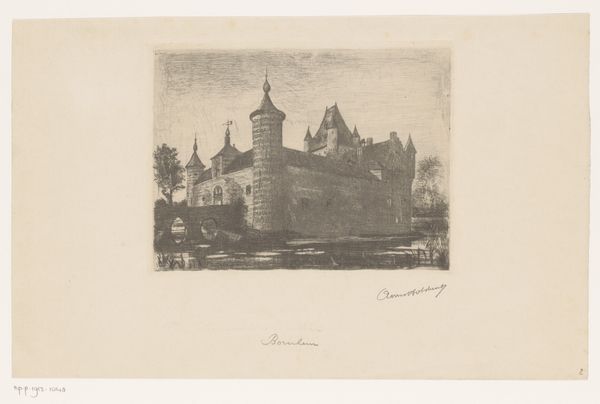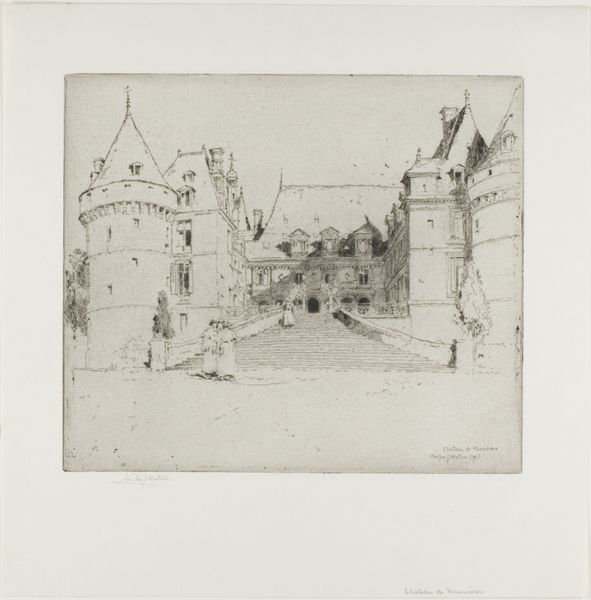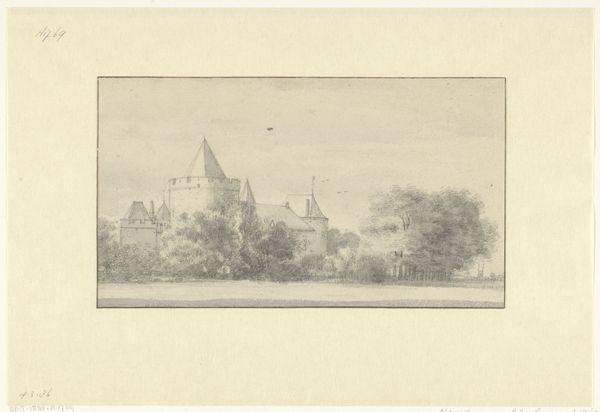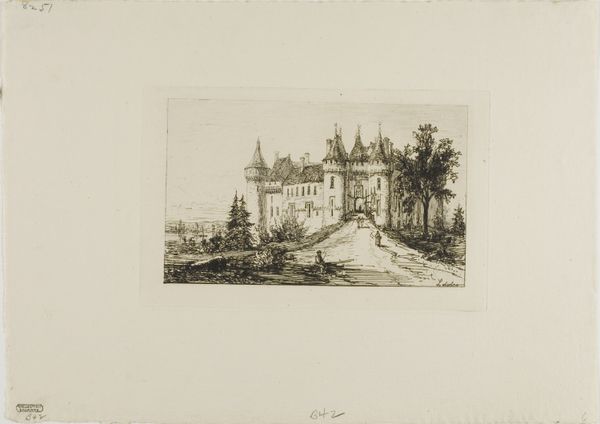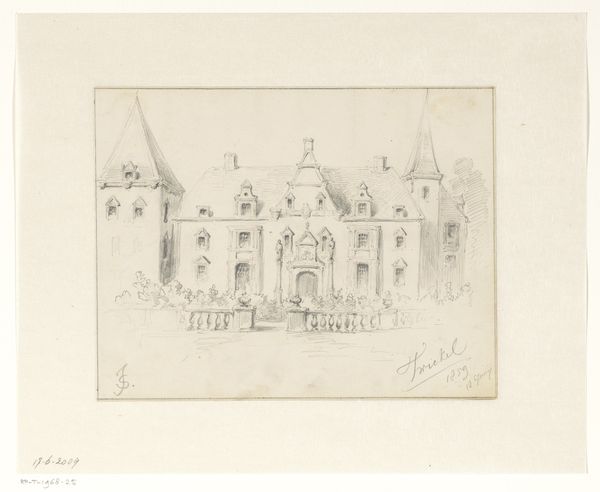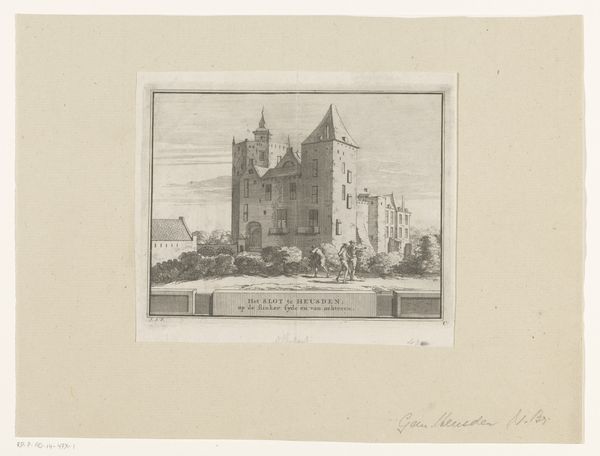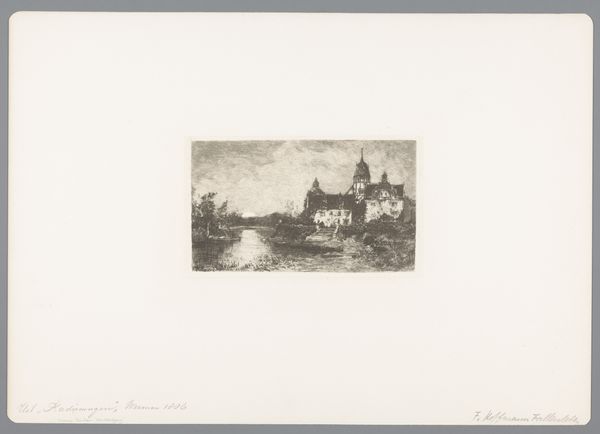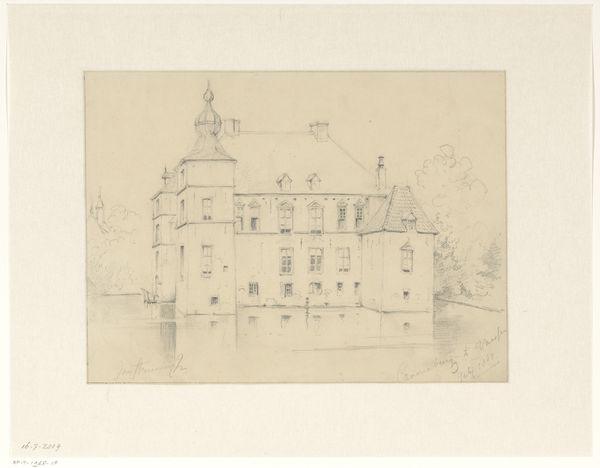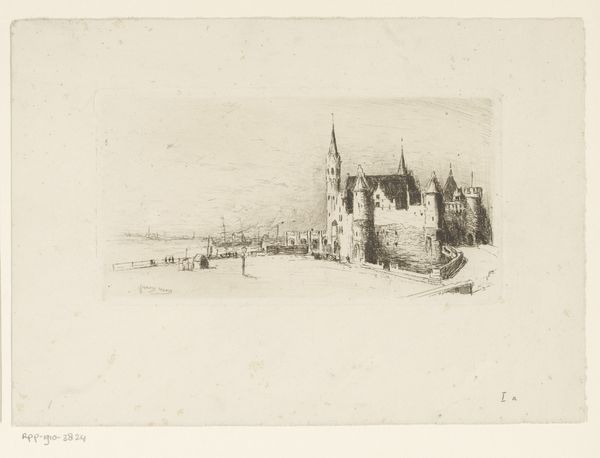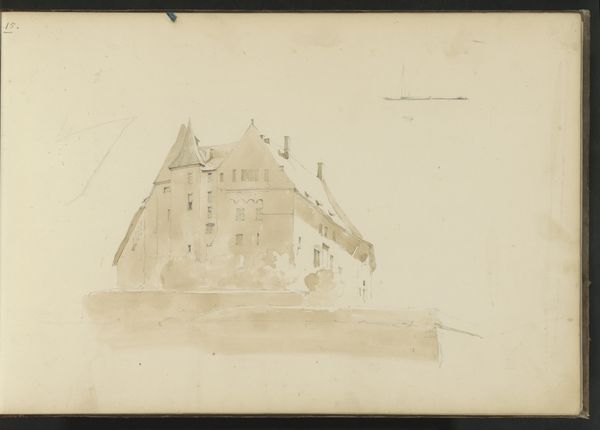
print, etching
#
medieval
# print
#
etching
#
landscape
#
etching
#
watercolour illustration
Dimensions: height 188 mm, width 255 mm
Copyright: Rijks Museum: Open Domain
Albert Van Holsbeeck made this etching of Marnix de Sainte-Aldegonde Castle sometime between 1877 and 1948. Etching is an intricate process where a metal plate is coated with a waxy, acid-resistant substance called a 'ground'. The artist then scratches an image into this ground, exposing the metal beneath. When the plate is submerged in acid, the exposed lines are 'bitten' or etched into the metal. Once the ground is removed, the plate is inked, and the surface wiped clean, leaving ink only in the etched lines. High pressure is used to transfer the image onto paper. The subtle tonal variations you see here are achieved through controlling the depth and density of the etched lines. This highly skilled, labor-intensive method allowed artists to create detailed, reproducible images, widely circulating views of architecture and landscape. Appreciating the craft involved challenges assumptions about the hierarchy of art, encouraging us to reflect on the social and economic contexts that enable artistic production.
Comments
No comments
Be the first to comment and join the conversation on the ultimate creative platform.
